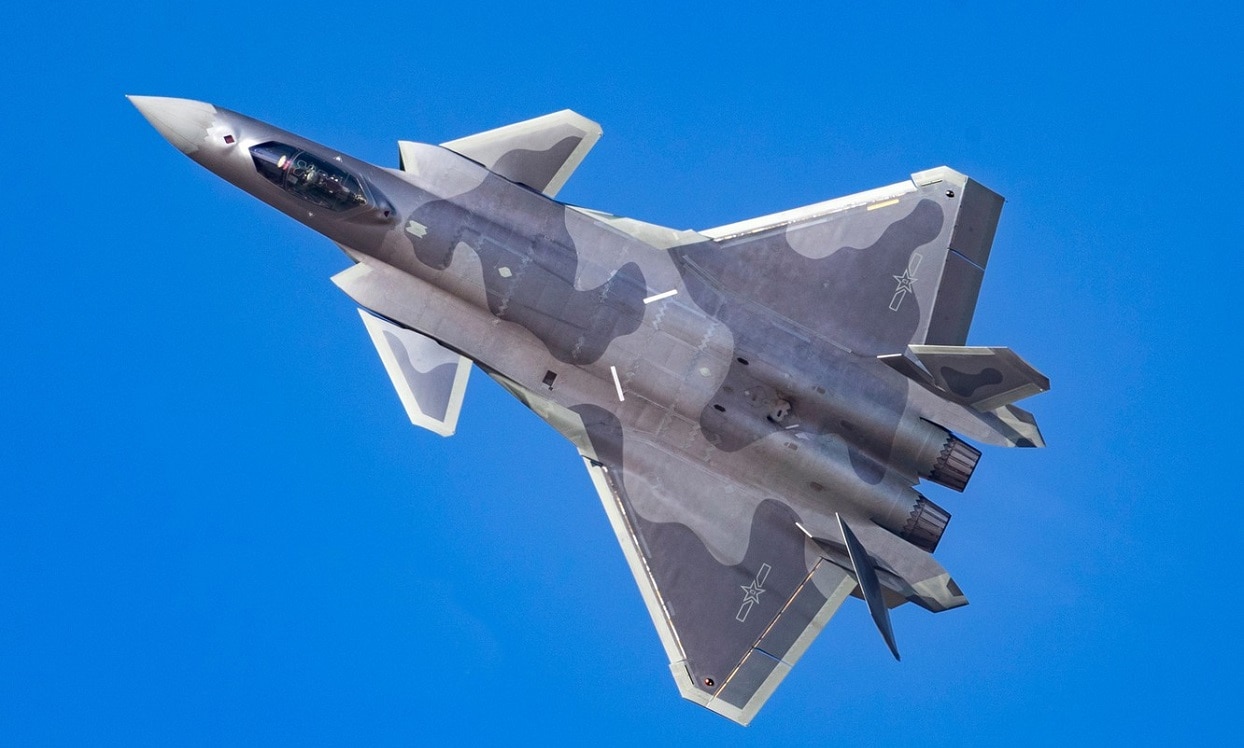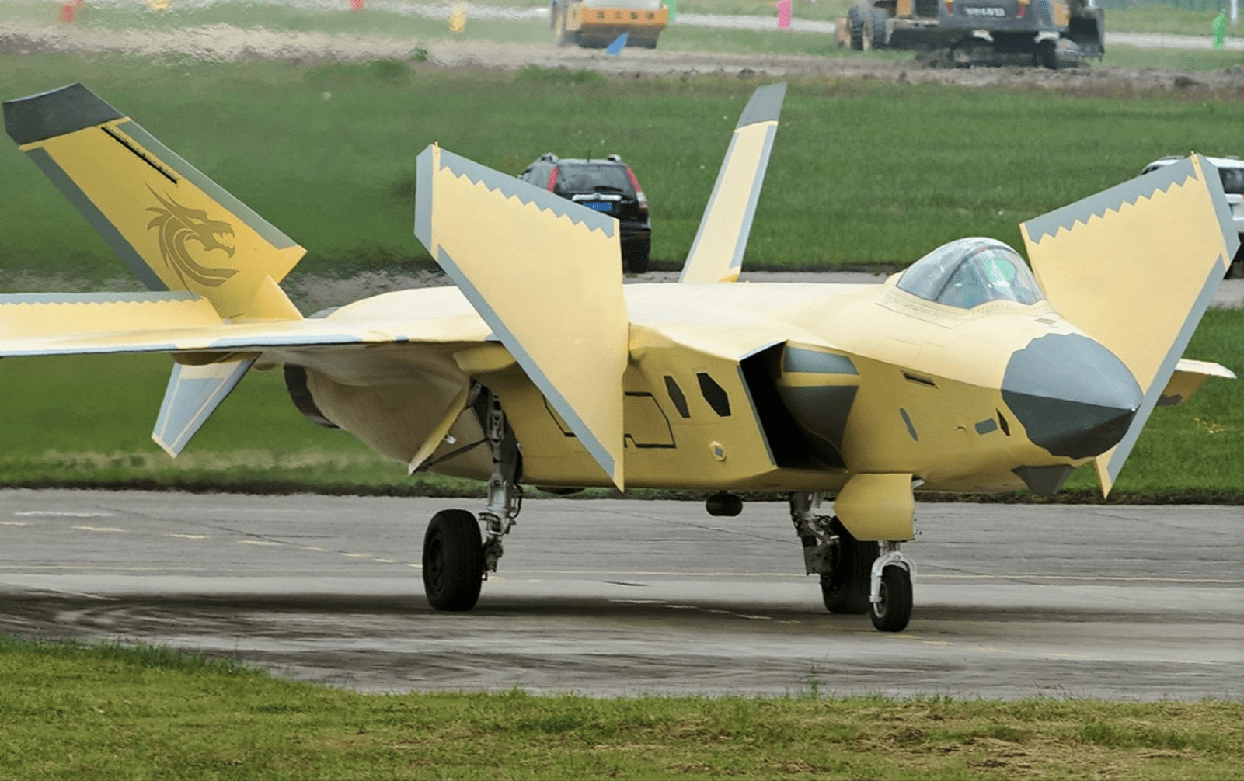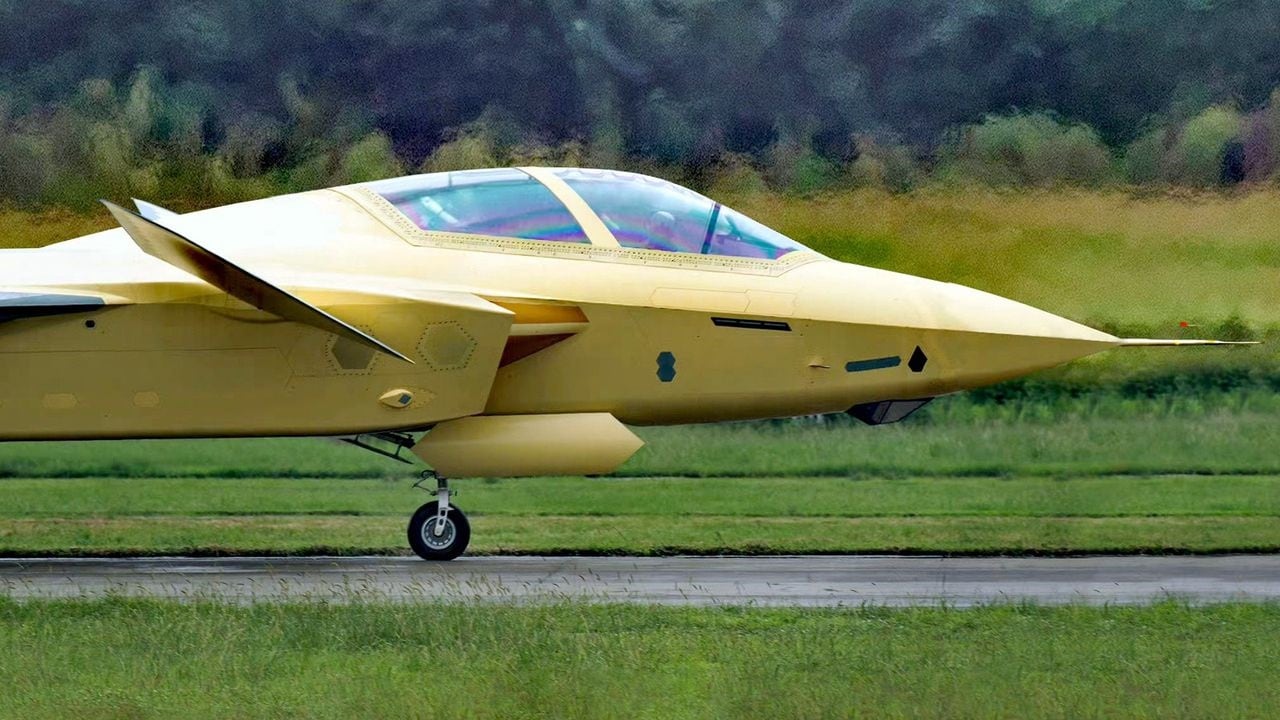Chinese government-backed newspapers often write about China’s famous Chengdu J-20 “Mighty Dragon” stealth fighter as a paradigm-changing, stealthy 5th-generation platform.
Many articles boast that the airframe has a new domestically built WS-15 engine and the ability to rival or outperform 5th-generation aircraft produced by the United States.

Image of J-20 fighter. Image Credit: Chinese Internet.
Despite the press about the airframe’s apparent attributes, the J-20 remains mysterious and has been curiously absent from public view to a certain extent.
Test flights primarily took place away from detected patrols or circumstances where Western satellite and drone observation was possible.
It is believed the J-20 is being mass-produced swiftly, changing the fleet size, structure, and composition of the People’s Liberation Army Air Force (PLA AF).
This production ramp-up impacts the threat equation, given that many public news reports estimate that China now operates roughly 200 J-20s and is surging forward quickly to build more. In May 2024, the PLA Air Force was reportedly equipped with 12 air brigades.
J-20 Mass Attack
China’s production capacity is well known and a consistent concern at the Pentagon. Taiwan, which is 100 miles from the coastline of China, is under threat of the J-20, despite the fact it is land-launched and incapable of operating at sea from a carrier. The PLA AF could easily mount a land-launched 5th-generation J-20 mass attack on Taiwan and operate within the craft’s required combat radius.
The inability to operate at sea, however, dramatically limits the PLA AF’s ability to achieve air superiority across more expansive areas of the Pacific, one possible reason why the PLA seems to be heavily emphasizing the development of China’s J-35 carrier-launched 5th-gen strike fighter.
The PLA may want to limit the West’s ability to see the fighter and gather information because although Chinese violations of Taiwan’s Air Defense Identification Zone (ADIZ) tripled between 2021 and 2023, the J-20 was rarely sighted and largely absent from these flight patrols. Research published in the Journal of Strategic Studies in June 2023 cites research detailing the uptick in ADIZ violations jumped from 971 in 2021 to 3,119 in 2022.
The Routledge Taylor and Francis Group published the study in the Journal of Strategic Studies in June 2023. The research details the number of PLA AF aircraft involved in the violations and specifies which PLA AF aircraft were used. The study found little or no account of the J-20 participating in these Chinese ADIZ violation flights.
US Air Force General Comments on J-20 Fighter
Publicly available specs and news articles offer insight into the fighter, yet there has been little discussion of its maneuverability and flight characteristics.
At one point in 2022, the well-known Chinese government-backed Global Times newspaper described an incident wherein the J-20 and F-35 flew in close proximity to one another as part of routine People’s Liberation Army exercises in the region.
The Chinese-government-backed paper article in 2022 quotes comments from Air Force Gen. Kenneth Wilsbach, former Commander of US Pacific Air Forces, saying the US pilots were impressed with the J-20. The US general’s quote reportedly came from an online event broadcast on YouTube, the paper says.
“We got relatively close to the J-20s along with our F-35s in the East China Sea, and we’re relatively impressed with the command and control associated with the J-20,” Wilsbach reportedly said, according to the Chinese paper.
J-20 as Bomb Truck
Wilsbach also reportedly said the Chinese pilots were “flying the J-20s pretty well,” according to the paper. It’s unclear what Wilsbach intended here, yet he was likely closely following the growing number of PLA J-20s and the reported minimal extent to which they had been observed. His comments indicate that the Pentagon has been taking the Chinese J-20 seriously.
The J-20 is known as a dual-wing, stealthy 5th-generation fighter aircraft capable of hitting speeds of Mach 2.0, faster than the Mach 1.6 F-35 but not as fast as the Mach 2.25 of the F-22. However, it is said to be a 5th-gen stealth fighter capable of matching or challenging the F-35 and F-22.
The J-20 does have a less stealthy, heavily armed “bomb truck” mode, given that it can take off with 27,988 pounds of internal and external ordnance. The J-20 in beast mode is much larger than a fully loaded F-35, which can carry 18,000 pounds of weapons, so it appears the PLA may be willing to compromise a measure of stealth in favor of larger weapons payloads.
Apart from these considerations, whether a J-20 can rival an F-35 or F-22 likely pertains to attributes less visible, such as sensing, computing, and targeting technologies. For instance, if a Chinese J-20 does not have targeting sensors or computing that is in any way comparable to the F-35, other attributes will be unimportant.

J-20 Stealth Fighter. Image Credit: Creative Commons.
In short, whichever aircraft can complete the OODA Loop (Observation, Orientation, Decision, Action) and operate within or ahead of an enemy’s decision cycle is likely to prevail by destroying the enemy faster than it can be hit. Completing this process requires expedited sensing, computer processing, data analysis, and integration, all of which are F-35 attributes that may or may not be rivaled by a Chinese fighter.
J-20 vs F-22
According to many top observers, with less speed than an air-dominance F-22 and a weaker thrust-to-weight ratio, the larger and arguably less stealthy J-20 is not likely to truly rival an F-22.
In an essay several years ago, Justin Bronk, with the London-based Royal United Service Institute, states that J-20s would be outmatched in the air by U.S. F-22s deployed to challenge them.
Bronk writes that the fighter “is a heavier, less agile aircraft that will be more expensive to build and operate. It also cannot compete with the extreme performance or agility of the F-22.”
About the Author: Kris Osborn
Kris Osborn is the Military Technology Editor of 19FortyFive and President of Warrior Maven – Center for Military Modernization. Osborn previously served at the Pentagon as a highly qualified expert in the Office of the Assistant Secretary of the Army—Acquisition, Logistics & Technology. Osborn has also worked as an anchor and on-air military specialist at national TV networks. He has appeared as a guest military expert on Fox News, MSNBC, The Military Channel, and The History Channel. He also has a Masters Degree in Comparative Literature from Columbia University.

